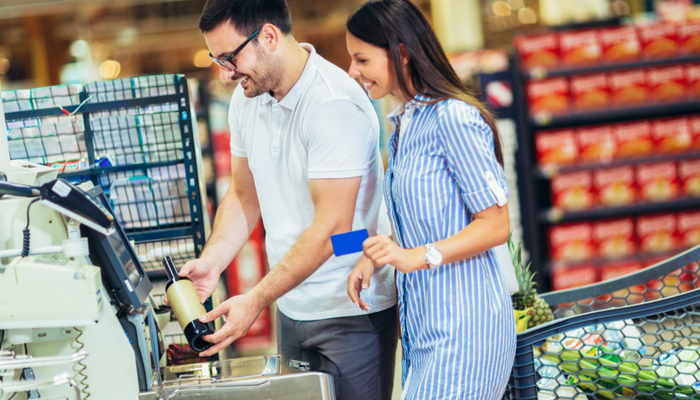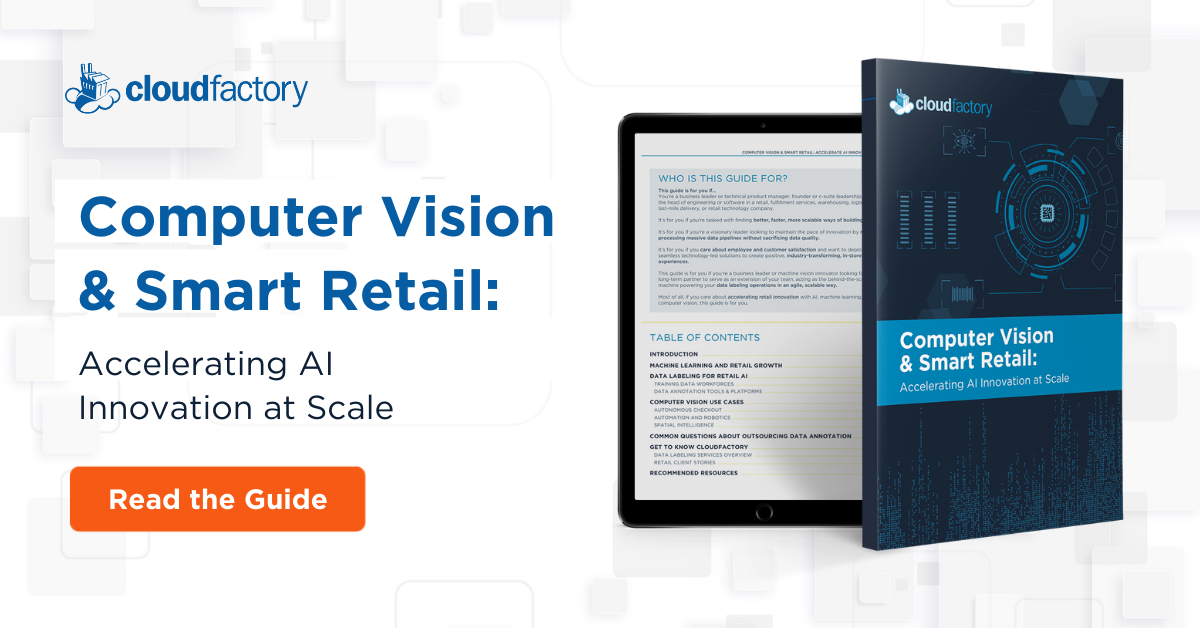Despite a pandemic, labor shortages, and a global supply chain crisis, consumer expectations of in-store retail shopping remain stubbornly high. And as retailers tinker with new methods and strategies to woo and win the hearts of shoppers, those expectations continue to grow.
One area is ripe (and perhaps overdue) for transformation: The retail checkout process. Although it’s still common to hear a voice over the intercom summoning “all available associates to checkout,” it won’t remain common for long. Retailers who continue to use that method to resolve long checkout lines will eventually lose at the expectations game, especially as new checkout technologies make their way into the market.
Enter self-checkout systems, which offer consumers varying levels of touch-free autonomy. At the lowest level is the self-checkout kiosk, which enables consumers to scan items and check out themselves. At the highest is the sophisticated autonomous checkout system, which uses computer vision technology to allow shoppers to walk in, shop, and walk out—a true, “no checkout” checkout.
Together, retailers and consumers are driving demand for this disruptive family of checkout technologies. On the retail side, such technologies give time back to employees to consult with shoppers, keep the shelves stocked, and focus on higher-value, strategic activities. On the consumer side, one study showed that 73% of shoppers prefer retail self-service technologies over engaging with store associates.
In this post, read more about three members of the self-checkout family:
- Grab and Scan
- Grab and Smart Cart
- Grab and Go
Grab and Scan: Semi-Autonomous Self-Checkout Systems

You’ve likely experienced, or have at least seen, Grab and Scan checkouts. Perhaps the most popular version is the self-checkout systems at grocery stores and other big-box retailers. With Grab and Scan, a shopper fills the cart, navigates to a self-checkout kiosk, and scans and bags items, one at a time. After scanning, the shopper pays by feeding cash into a machine or swiping a credit card.
While a step towards autonomy, these systems still leave the consumer grappling with checkout friction and a poor consumer experience. There’s the scanning, the entering-in of codes, the waiting-for-an-associate-because-you-entered-in-the-wrong-code, not to mention the simultaneous bagging. This is still a contact sport.
Although Grab and Scan does little to improve the shopper’s experience, it’s the easiest for retailers to implement. One iteration of this model, which modestly reduces friction, is scanning items using an app on a mobile device, such as the Apple Pay app on an iPhone.
Grab and Smart Cart: Moderately Autonomous Self-Checkout Systems
Tapping the power of computer vision, retailers can use smart carts to further improve the consumer experience. Smart carts look like regular grocery carts, but typically have tablet-sized devices attached near the cart handles, or leverage smartphones and an app as the interface. When a consumer places an item in a smart cart, a camera on the back of the attached device automatically views and recognizes the item without needing a barcode scan. These smart cart systems have also been adapted to smart baskets, ideal for smaller grocery stores and for shoppers buying just a few items. The technology can also determine the weight of things, like produce, and calculate prices. A consumer using the smart cart can complete the checkout process right there, on the cart, using a credit card or previously set up account.
Retailers can implement Grab and Smart Cart systems quickly, without store modifications. Veeve’s Intelligent Cart is one example; it allows grocery retailers to provide a convenient shopping experience by giving people the freedom to skip the line—consumers can simply scan, pay, and go.
Grab and Go: Fully Autonomous Self-Checkout Systems
Grab and Go represents the highest level of checkout autonomy. It offers the least in-store friction and makes for the easiest possible shopping experience. With Grab and Go, an app on the shopper’s mobile device communicates with the store to let the system know who just entered. Then, bag in hand, the shopper walks the store, shopping and placing items into the bag. When finished shopping, the shopper simply walks out, no checkout needed. An advanced network of cameras and sensors uses computer vision to identify items before they’re placed in the bag. And the system automatically processes the payment when the shopper leaves the store.
Amazon Go retail locations are a great example of Grab and Go technology.
While Grab and Go does require that retailers install cameras and other sensors, it provides a frictionless consumer experience and delivers additional benefits to the retailers, including instant payment processing and real-time, detailed views of inventory. Grab and Go systems can also help retailers better understand shopping habits and improve shelf-space selection for specific items.
Computer Vision: Powering the Autonomous Checkout Revolution
Success with computer vision technology in retail requires developing and training AI models with machine learning (ML) techniques. In machine learning, data labeling—or data annotation—is the process of preparing unstructured training data to show the outcome you want the machine learning model to predict. You are marking—labeling, tagging, transcribing, or processing—a dataset with the features you want your machine learning system to recognize.
Analyzing images for use in retail AI is labor-intensive and time-sensitive work best performed by trained data analysts who can annotate and label with high flexibility, quality, and scale. Because of the volume of images and the nuances involved, trained experts commonly spend up to 800 hours to properly annotate a one-hour video to feed a computer vision machine learning model. And it can take thousands, even millions, or “exabytes of training data… gathered from real products in live stores” to properly train and maintain an advanced computer vision model for use in the real world.
If it takes so much work, why do it? The benefits of creating ML models for retail are enormous. Computer vision models often reveal insights, patterns, and trends that humans may not easily spot. AI-powered computer vision models achieve this level of performance by processing large volumes of retail-related images and videos, providing retailers, brands, and manufacturers with real-time insights that increase sales, lower costs, improve experiences for customers and employees, and make retail operations more efficient.
Due to thin margins and stiff competition, there will always be winners and losers in the retail industry. Companies that fail to innovate — especially in industries like retail that operate on thin margins and against stiff competition — are at risk of falling behind. There is a strong case for innovations like autonomous checkout in the retail space.
This blog post is the first in a series on how computer vision is powering the autonomous checkout revolution and retail AI. Stay tuned for the next post.
Computer Vision Image Annotation AI & Machine Learning Retail retail data



